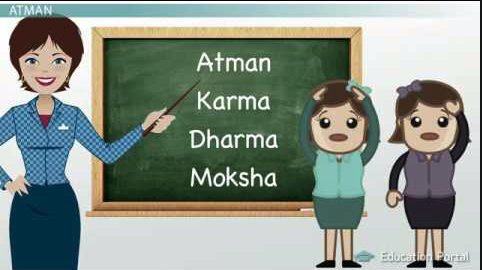This questions and answers document is prepared by a group of Hindu Speakers as a source of information for them or for any one seeking information on Hinduism. There are multiple ways of answering a single question and this group is not claiming to provide all potential answers here.

On Hinduism
The target audience is 9th grader Abrahamic students in American Schools but it will be useful to anyone interested in learning about Hinduism. All answers are designed to answer in about a 3 minute time frame. We have also provided links to other reading materials and video links relating to each question.
Considering Hindu speakers are invariably asked some sensitive geopolitical questions, we have included some potentially sensitive topics here to help speakers answer them from Hindu perspective. However we wish to clarify that this group is composed of Hindus but the group does not have any political affiliation.
Questions starting with “z” are being worked on now. We hope to list some 300 questions and answers below.
If you wish to review these questions and answers in the PDF format, here it is.
If you have any feedback on these QAs, please write to HinduSpeakers@gmail.com. Thank you.

23. Yoga and Meditation
OM, ॐ or AUM (pranava) refers to Atman (soul, self within) and Brahman (ultimate reality, truth, divine, supreme spirit, cosmic principles).
OM is a mantra. Its meaning slightly differs depending on how it is used. First of all OM is a sound symbol for God or Divinity. Just like cross is a physical symbol for Christ, OM is also a symbol, but it is in a sound form. OM is used as a sound during meditation practice. You chant OM and listen to it. Here it is used just as a soothing sound. OM also means “Everything together” as in Infinity.
OM is made up of 3 letters followed by silence; (In Sanskrit; breathing pattern is explained) A (expel air from stomach area) + U (expel air from the chest region) + M (think like you are expelling air from your mind and mouth) + silence (a brief breathless period). AUM stands for beginning, middle and end + silence.
Other reading material: Yoga Sutra 1.27 , What is AUṀ? , The Significance of ॐ: A Linguistic and Philosophical Analysis
Relevant videos:
Contributor: Dr. Jyoti Lulla
The word ‘Yoga’ is derived from the Sanskrit root ‘Yuj’, meaning ‘to join’ or ‘to yoke’ or ‘to unite’. Yoga is essentially a practice and a spiritual discipline to reach your inner consciousness, to touch the non-physical dimensions (beyond body, mind and emotions) that we call the soul or atman.
Yoga, as posture and meditation, is the practical branch of a wider school that also includes philosophical inquiry and religious ritual practices. All these branches form the core of Hinduism.
As you gain understanding of Hinduism and Yoga, you will understand Yoga is a personal tool for self break away from the cycles of birth and death and to unite with Divine. As such, Yoga and Hinduism are inseparable from each other, the way Gravity is inseparable from the Physical realm of this Universe.
Unfortunately this question comes up because Yoga in the Western world has been confined to the Asanas (physical postures) that have gained popularity and wider adoption through the fitness studios for the physical wellbeing it brings. However, it limits and devoids one of the full potential Yoga can bring in attaining peace, joy, happiness, calmness and realization that one’s inner self is nothing but the manifestation of omnipresent God.
It should be called out that Hinduism doesn’t ask Yoga practitioners to follow or convert to Hinduism, rather encourages all seekers to practice Yoga as a means of spiritual discovery and realization. As such, while Yoga belongs to the world, it finds its roots and essence in Hinduism and two can not and should not be seen separately.
This is time to recognize the roots of Yoga to its Hindu origin so it can be brought in its full glory by the Masters and Enlightened Gurus, rather than by the charlatans or self-proclaimed Yoga teachers who learn through textbooks or through limited training.
.
Other reading material: Short answers to real questions about Hinduism, The Origins and Ownership of Yoga
Relevant videos:
Contributor: Vikas Gupta
The four paths of yoga are Bhakti, Karma, Gyana and Raj Yoga. These are four different approaches to connecting with the Divine or connecting with the Self. All individuals can benefit from any or all of these paths in their spiritual journey. However, it is up to the individual to find the right mix to devote their time towards the practice of each path. Most Hindus follow all of these in some manner. All four paths lead to the ultimate goal of Enlightenment.
.
Bhakti Yoga, or the path of love and devotion to the Divine is ideal to rid the mind of negative thoughts and emotions and replace it with blissful love of the divine. It teaches us to see the divinity or the Supreme Self in everything and everyone.
Karma Yoga teaches selfless action. It encourages the practitioner to seek perfection in actions without attachment to the fruits of the actions. It is also a central teaching based on the famous doctrine of Karma–actions have consequences. It is the best path for individuals seeking to make a positive difference in this world with their actions.
Jnana (Gyana) Yoga is the path of pursuit of divinity through pursuit of knowledge of the Self. It provides a set of reasoning contained in scriptures that allow the practitioner to achieve Enlightenment or Self-realization. It is the path that most directly addresses the famous question “Who am I?” or the process of Self-realization.
Raj yoga is the path for those seeking a spiritual journey through self-discipline. Many Hindu scriptures provide a detailed guide to the spiritual journey of a Raj yogi. This is also the path which is the basis of what most westerners know as ‘Yoga’ and meditation. Patanjali’s Yoga Sutras provide an eight-step approach to enlightenment through the control of the body, mind and its senses.
Other reading material:
https://chopra.com/articles/the-4-paths-of-yoga
https://sivanandayogafarm.org/blog/4-paths-of-yoga/
https://www.ekhartyoga.com/articles/philosophy/the-4-paths-of-yoga
Relevant videos
Contributor: Shan
URL of this page: hinduspeakers.org/ufaqs/z-what-are-four-paths-of-yoga/
Meditation (dhyana) in Hinduism is a practice that helps you become the master of your mind, body, and emotions. Your mind, body, and emotions are your tools. You are meant to be in charge of them, not the other way around.
There are many ways to meditate, for example: OM/AUM chanting, chakra meditation, focussing on one’s ishtadev (who you identify as God) such as Lord Krishna with Hare Rama Hare Krishna mahamantra, singing devotional songs and so on. The the goal is the same: moving beyond your mind-body-emotions and ultimately realizing God and the true nature of your soul (moksha).
Other reading material: Purpose of meditation, Sadhguru-Yoga for Beginners , How do I meditate #78
Relevant videos: https://www.youtube.com/watch?v=uGosHULQQk0, Hinduism Q & A: What is Meditation ,
Contributor: Swati Sugandhi
